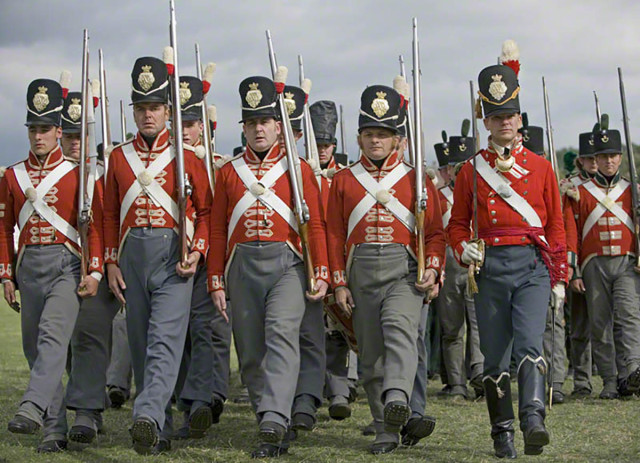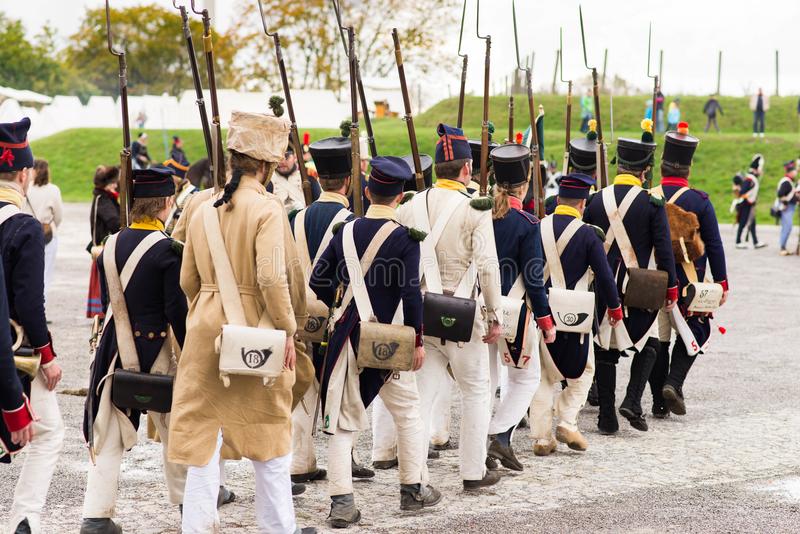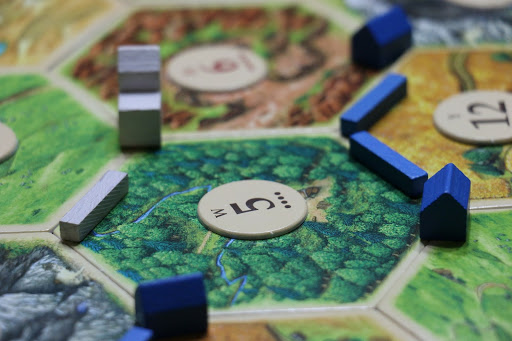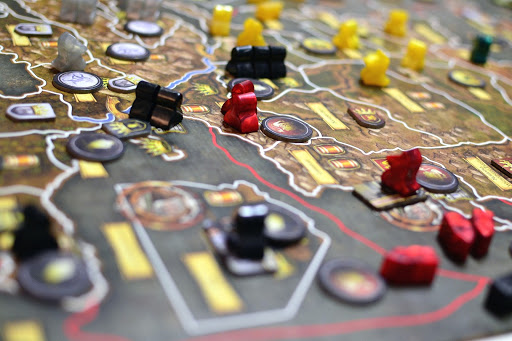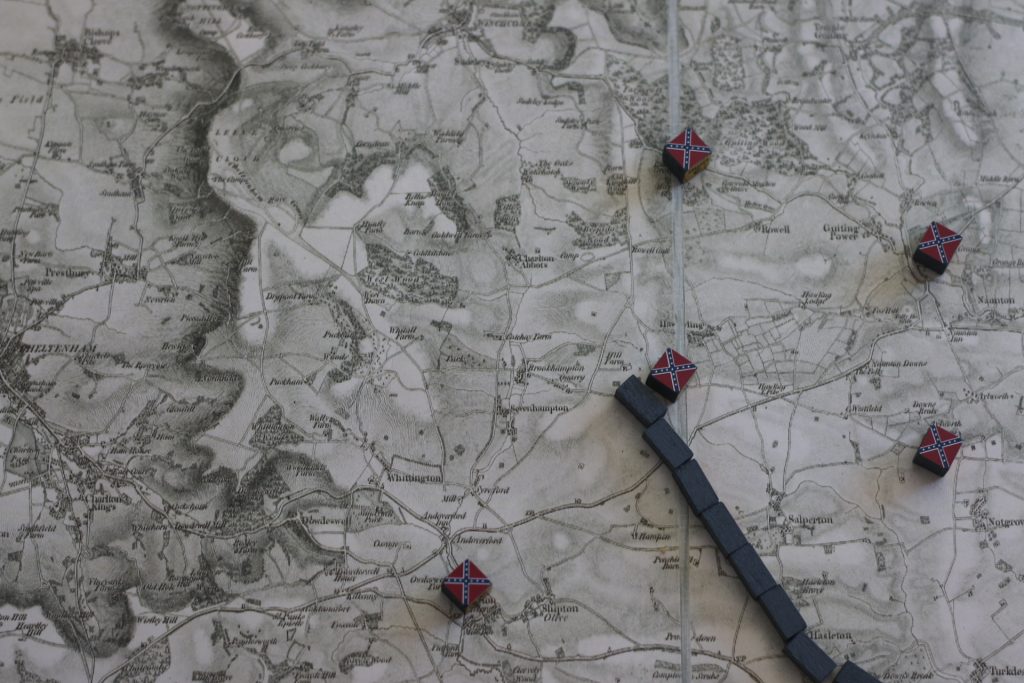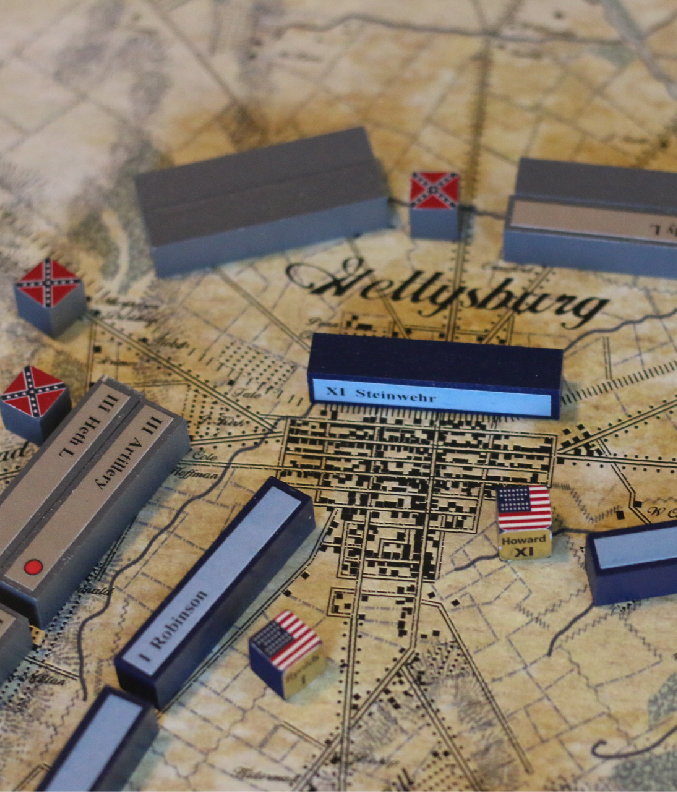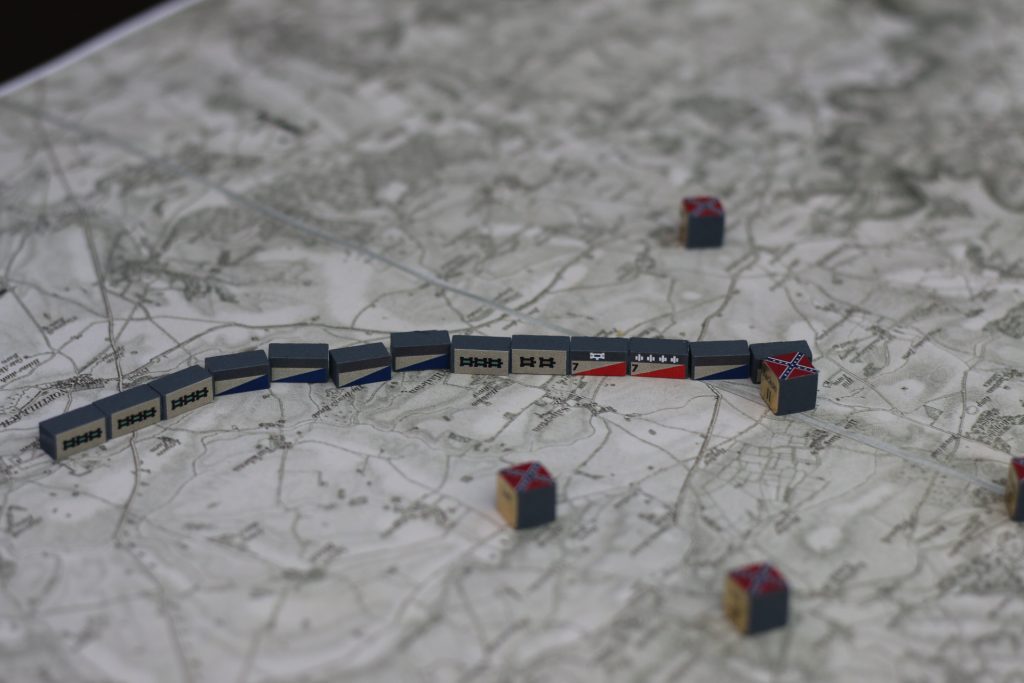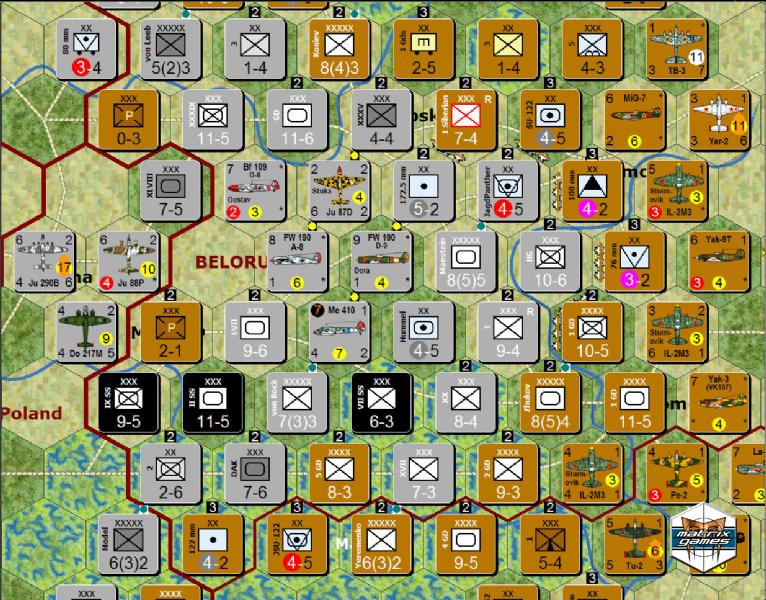Managing baggage trains can seem overwhelming at first. As wargamers, we aren’t used to thinking like this. Does it sound tricky? It can be but that’s what makes it so fun!!! It is worth the effort.
Here is the basic rundown:
1. Combat flips your pieces to Spent.
2. Only Unpacked baggage can rally them back to Fresh.
3. Unpacked baggage can’t move.
4. If your baggage gets sacked, you lose. Game over.
Easy.
Here are a few basic tips to get you up and running quickly:
When to Unpack Your Baggage?
The Baggage Trains are critical to victory. Here are a few tips to get you started and keep you out of trouble:
Defense
Don’t unpack too soon.
Don’t unpack too far forward!
Example
Let’s say we’re running the Feds at Gettysburg, Day 1. We deployed Reynolds’ I Corp along McPherson’s Ridge. The Confederates launched their first assault. We drove the Rebs back and mostly held. Fantastic but our line is now Spent.


At this point, it is very tempting to unpack. We are off to a good start. If we unpack we can now rally this line and maybe hold much longer!! Sure that’s true but it’s not good enough.
Don’t marry the first girl you kiss! Yes, you need to have commitment issues!!
Unpacking is a huge commitment. Don’t unpack because things are looking good right now. Sure you may be able to hold for another assault. Especially if you start rallying. Maybe you can hold for another couple of turns. Still not good enough.
Here is the key question you need to ask yourself:
If you unpack, can you hold this for the rest of the battle?
Yeah, not a few turns. Can you hold this line for the next 3 days? Come what may? What happens when Ewell comes storming down out of the north 2-3 turns from now? What if Jackson and Stuart unexpectedly show up? Can you still hold that for 3 more days? I didn’t think so.
With Baggage Trains, you need to think very long term. The whole battle depends on it, so think in terms of the battle.
The beginning of a battle is the trickiest part. You need to be constantly asking yourself these questions:
Where is the enemy’s main threat? How strong is the enemy? Where can I delay? Where and when will reinforcements arrive? Where can I fall back to? Where can I make a stand and hold for the entire battle? How can I minimize casualties until then?
Blow by blow, as the battle is developing, all these answers will be changing. You need to constantly reassess the situation. Where can you fight? Can you even fight here at all? Maybe the best solution is to never unpack. Just fight a delaying action for a day and then bug out. Sometimes that’s all you can do. Is this really a battle you can fight? Is it a battle you can win?
Once you unpack, things get much more simple. None of that matters anymore. You’re all in. Now the question becomes: How on earth can I possible hold this line? How can I take pressure off and distract the enemy? Where are his unpacked trains? Can I get to them before he can get to mine?
Did the enemy break through? Can you counter attack and drive him back? How much longer can you hold out? Is it time to give up and pull the plug? It is much better to voluntarily bug out than let your baggage trains just get sacked. Pack up and go home. You can fight another day.
Offense
For Offense, unpacking is more simple. Two key questions:
Has the enemy unpacked yet? Where?
Do NOT unpack unless you are sure the enemy already has. If you unpack too early, you will be hopelessly overextended for the rest of the battle. You will never be able to mount a serious threat.
Once you are sure the enemy has unpacked, you need to formulate your overall strategy for the battle. Where is his line going to be? How can you crack it? What is the weak link? Where are you going to make your main effort? Think long term: For the whole battle, not just the next turn or two. You need to plan ahead for this.
Wherever your main effort will be, your trains need to be able to effectively support that.
Where to Unpack Your Baggage?
Now that we know when, the next question is where? Where is the best place to locate your Trains? This is fairly simple. It just requires a little careful planning.
Work this backwards.
Defense: Where is the line you plan on holding?
Offense: Where is the defender’s committed line? Where will your line be to assault that?

Ok now, where will your troops be when they retreat off that line?

Your Baggage Trains need to be able to rally this spent line efficiently. Simple place them where their range will extend over most of this area.




Finally, don’t worry too much. You don’t have to be perfect. The enemy won’t be perfect either. Just dive into a battle and try something. Experience is the best teacher. “Ah, now I see why I shouldn’t have unpacked there.” Yeah, well the upside to making a big mistake with baggage trains is that the battle will be over soon. Now you know. Now you’ll remember. Now you have plenty of time to start a new battle.





